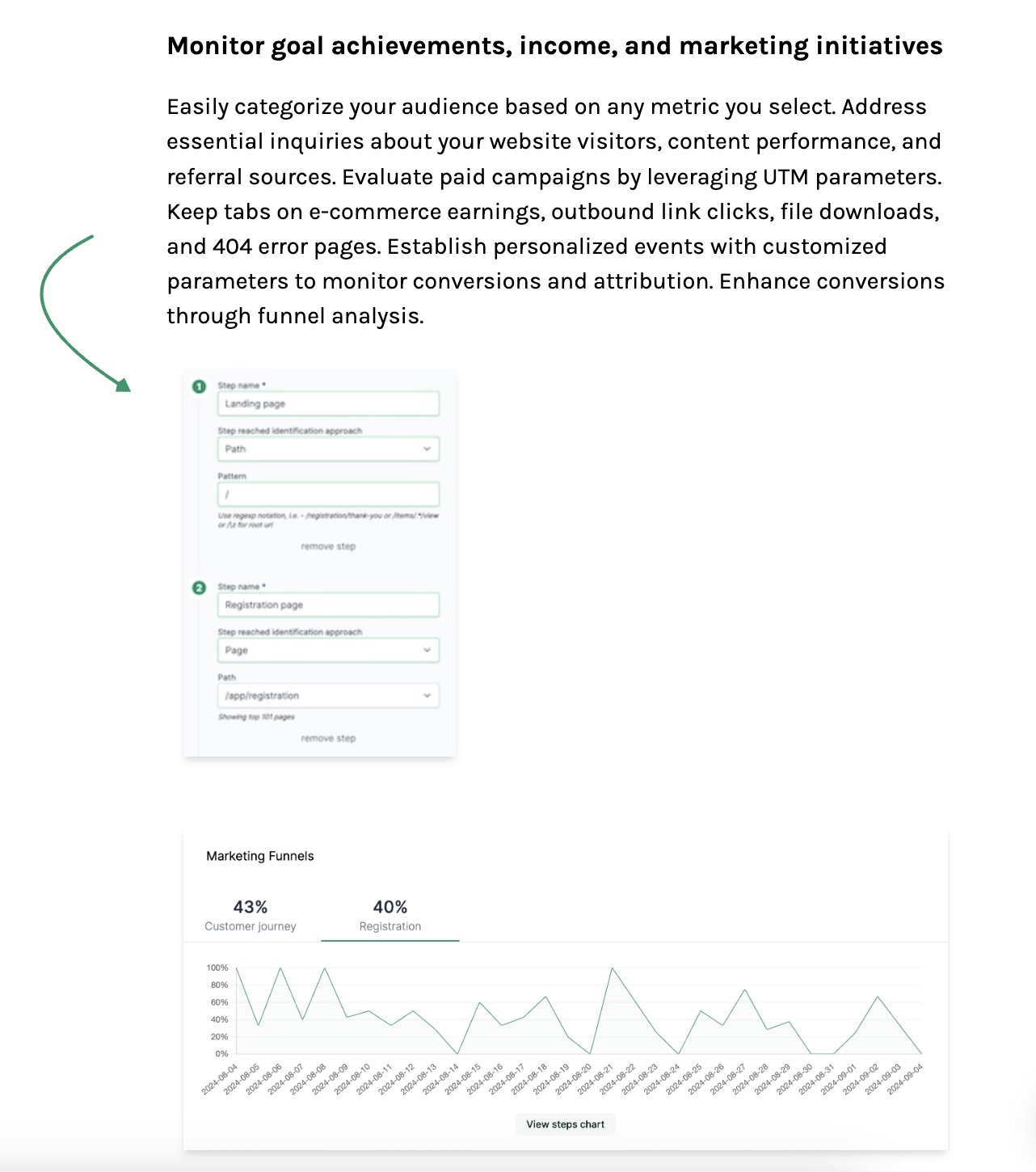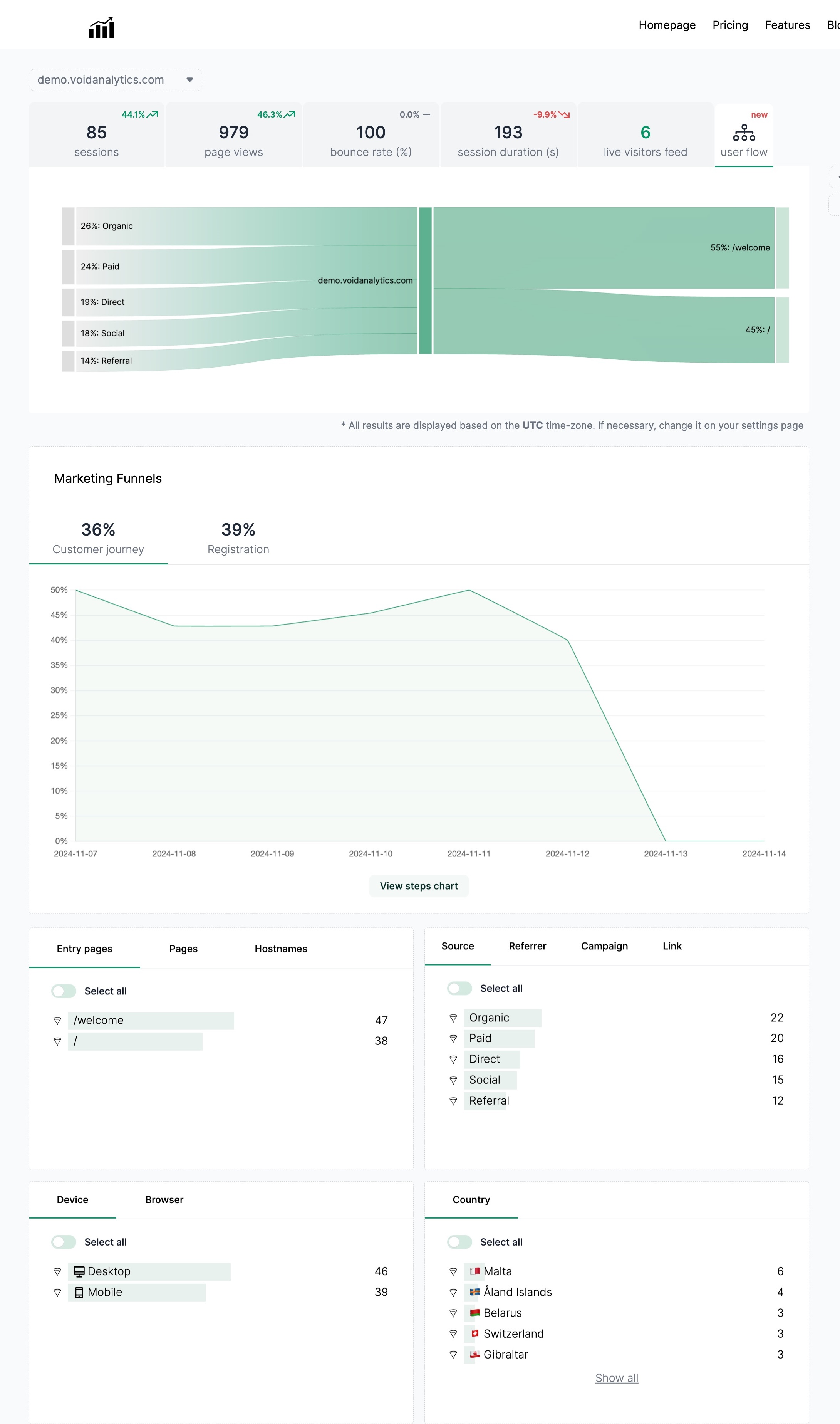When Does GA4 Take Over?
Published on 2024-03-14
In the world of digital marketing and analytics, Google Analytics has long been a household name. It has been the go-to tool for businesses looking to track their website traffic, analyze user behavior, and make data-driven decisions. However, with the recent release of Google Analytics 4 (GA4), many marketers are wondering when GA4 will take over and what it means for their current analytics setup.
GA4 is touted as the next generation of Google Analytics, offering a more advanced and comprehensive set of features compared to its predecessor, Universal Analytics. It promises to provide businesses with deeper insights into their customers' behavior, improved data accuracy, and enhanced tracking capabilities. But despite these benefits, there are a few reasons why customers should think twice before jumping on the GA4 bandwagon and instead consider an alternative like Void Analytics.
Why Should Customers Ignore GA4 and Choose Void Analytics Instead?
Simplicity
One of the key features of Void Analytics that sets it apart from GA4 is its simplicity. While GA4 offers a wide range of advanced features and customization options, it can be overwhelming for users who are not familiar with analytics tools. Void Analytics, on the other hand, is designed with simplicity in mind, making it easy for even non-technical users to navigate and understand their data.
With Void Analytics, customers can quickly set up tracking on their website, view key metrics at a glance, and generate reports without having to spend hours sifting through complex settings and configurations. This simplicity allows businesses to focus on what matters most – understanding their customers and making data-driven decisions – without getting bogged down in the technical details.
Privacy Friendly
Privacy has become a growing concern for consumers in recent years, with many people becoming more aware of how their data is being collected and used online. GA4, like its predecessor, collects a vast amount of user data, including personal information such as IP addresses and device identifiers, which can raise red flags for privacy-conscious customers.
Void Analytics, on the other hand, takes a privacy-first approach to data collection. It only collects the data necessary to provide businesses with valuable insights, such as page views, click-through rates, and conversion rates, while respecting users' privacy and anonymity. This commitment to privacy not only helps businesses build trust with their customers but also ensures compliance with data protection regulations such as GDPR and CCPA.
Not Sampled Data
One of the limitations of GA4 is its reliance on sampled data. Sampling is a technique used by analytics tools to estimate metrics based on a subset of the total data, rather than analyzing the entire dataset. While sampling can help speed up data processing and reduce storage costs, it can also lead to inaccuracies and skewed results, especially for websites with high traffic volumes.
Void Analytics does not rely on sampled data, instead providing businesses with real-time, granular insights into their website performance. By analyzing every interaction and event on the website, Void Analytics ensures that businesses have access to accurate and up-to-date data, allowing them to make informed decisions with confidence.
Conclusion
While GA4 may offer a range of advanced features and capabilities, customers should consider the limitations and drawbacks of this tool before making the switch. Void Analytics provides a simpler, privacy-friendly, and more accurate alternative to GA4, offering businesses the insights they need to succeed in today's competitive digital landscape. By choosing Void Analytics, customers can focus on what matters most – understanding their customers and driving growth – without compromising on simplicity, privacy, or data accuracy.

